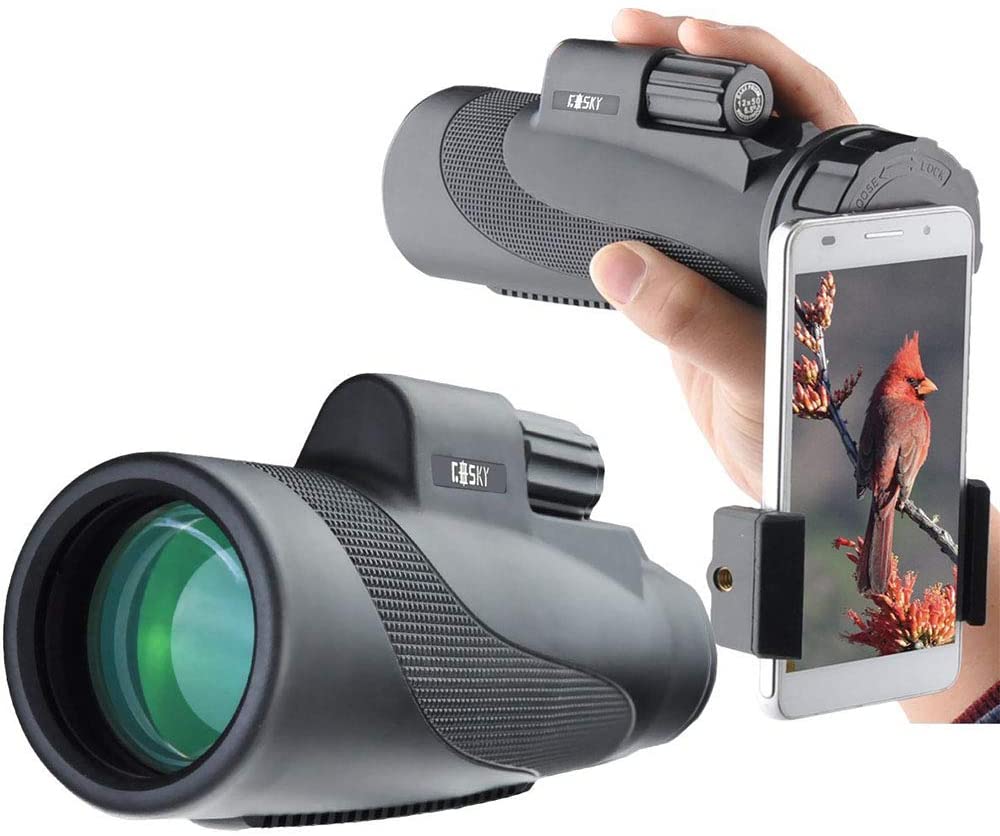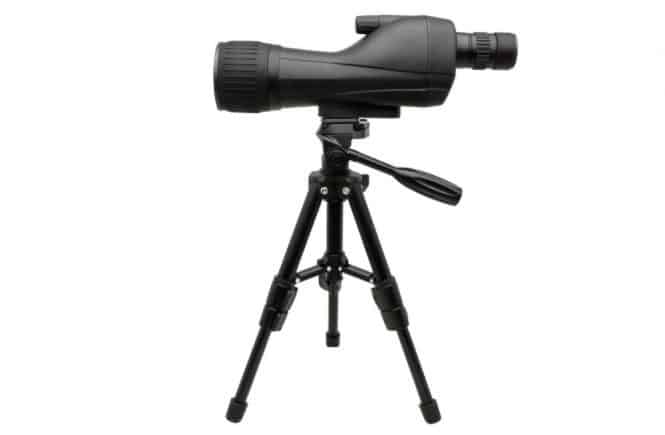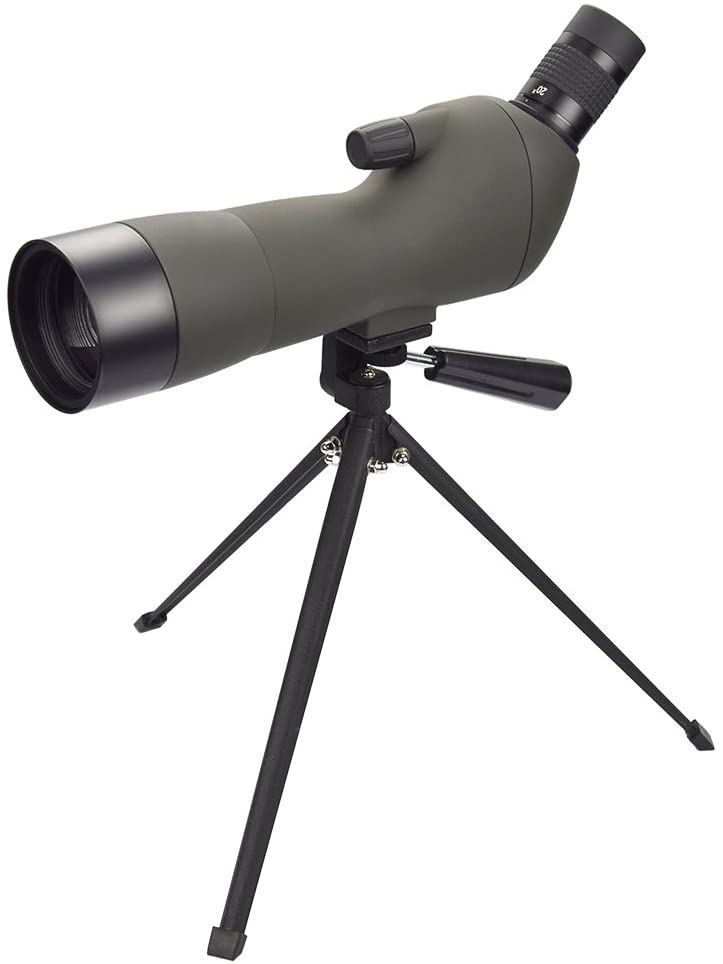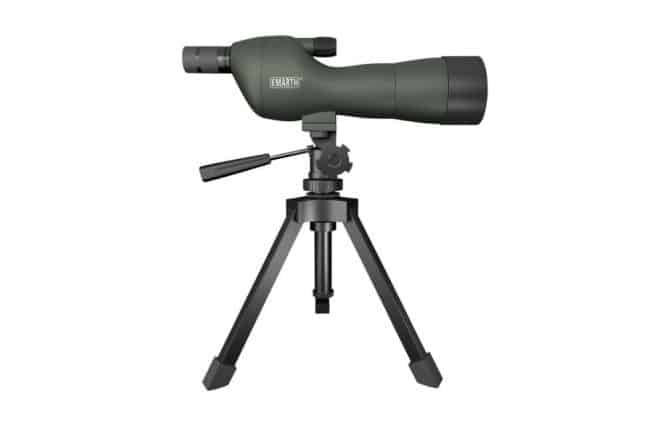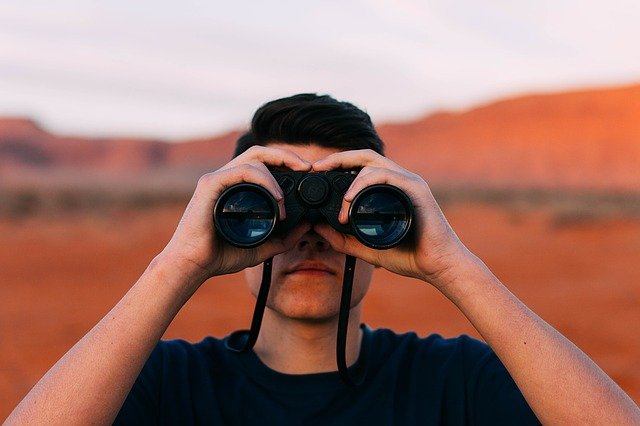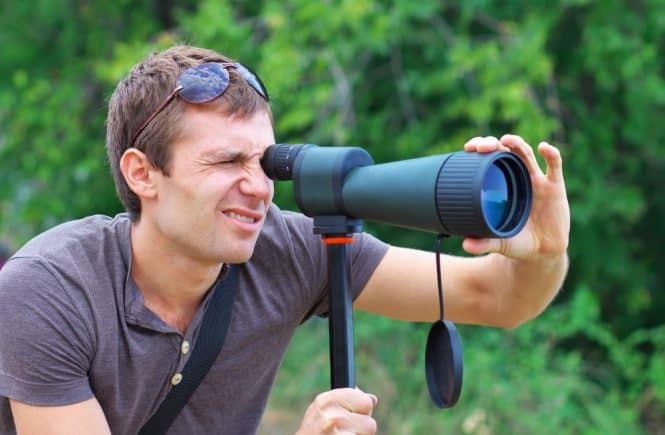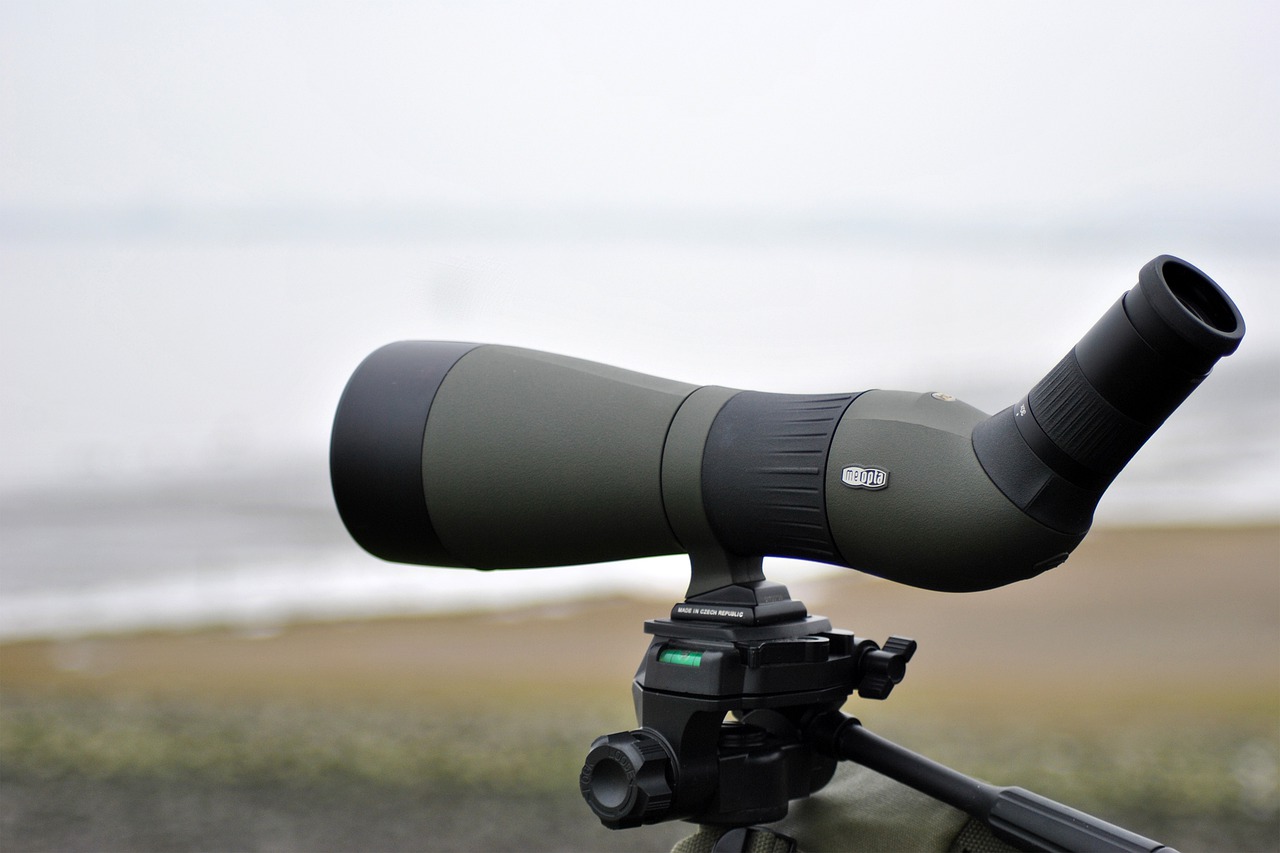
A&W Outlets
The Best Spotting Scope Reviews and Advice
Can I Mount a Spotting Scope to My Camera? Let’s Talk Digiscoping
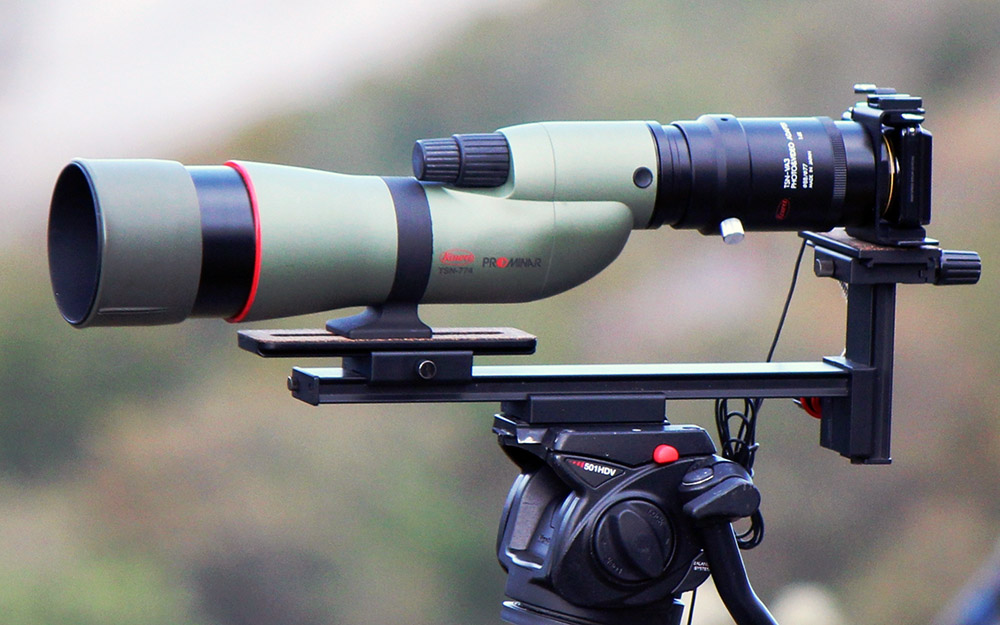
This site contains affiliate links to products. We may receive a commission for purchases made via these links.
Table of Contents
Introduction
There comes a time in every outdoor lover’s life when the question pops: “Can I mount a spotting scope to my camera?” Well, for the unfamiliar, digiscoping is a real and big phenomenon in the nature lovers’ community. Apart from just being a cool way to spot things, it brings a lot of advantages that make it a better way of experiencing nature.
Digiscoping: An Overview
Digiscoping is, basically, using a spotting scope to increase a camera’s capabilities. It can be done using any type of camera, even a smartphone camera. This type of photography allows the user to gain a powerful optical zoom device. Spotting scopes are a lot cheaper than very powerful camera lenses, so it makes sense that this type of hobby is thriving.
Adding a scope to a camera can be useful in a big number of activities. No longer will people have to carry notepads and other items to document their findings. A camera allows outdoor enthusiasts to record their findings in real-time; hence, revisiting accurate and reliable information later on.
Digiscoping is great for people who:
• are interested in documenting their findings, either terrestrial or celestial
• want powerful scopes for a cheaper price
• want to capture shots in inaccessible places
Digiscoping is not good for:
• capturing detailed frames of objects
• picture quality and color accuracy
The Limits
 First of all, there are some limits to the quality of digiscoping footage since spotting scopes use very different lenses compared to traditional cameras. What such means is that, for instance, a smaller diameter camera with a thick coating will result in lesser light reaching the shutter. Longer shutter times and discoloration are some of the problems which can occur from buying the wrong product.
First of all, there are some limits to the quality of digiscoping footage since spotting scopes use very different lenses compared to traditional cameras. What such means is that, for instance, a smaller diameter camera with a thick coating will result in lesser light reaching the shutter. Longer shutter times and discoloration are some of the problems which can occur from buying the wrong product.
That being said, not everyone wants true-to-life picture quality, and it’s understandable. A smaller diameter scope will translate into a lighter traveling kit—something that’s crucial in a lot of different scenarios. Each user should pick what fits their personal style and needs. Here is what to remember:
• Lens coatings will affect the light’s penetration power in contact with the lens. Fluoride coatings are great for letting a large amount of light passing through.
• Image quality will degrade, no matter how good the scope is. A spotting scope lens will never surpass the accuracy of a camera lens, not in a million years.
• The lens diameter will also influence how much light passes through the scope. Bigger means clearer images, but also more weight and room when packing.
• The eyecup’s position will also dictate how comfortable will the user be when recording and how stable the tripod will be, something that’s going to affect the image quality.
• More expensive doesn’t always mean better. Stay within a reasonable price range and try to keep an eye out for lenses that work well with cameras.
Mounting a Camera To Your Spotting Scope: The Basics
 For close-to-life picture quality, there are a few things that one needs. A DSLR or mirrorless camera would be perfect. A scope adapter for the camera lens should be enough to be good to go. Keep an eye out for manufacturers that either bundle their scopes with adapters or sell specific adapters for specific scopes. Don’t shop for random optics in hopes of later purchasing the rest of the accessories, there’s a high risk of incompatibility.
For close-to-life picture quality, there are a few things that one needs. A DSLR or mirrorless camera would be perfect. A scope adapter for the camera lens should be enough to be good to go. Keep an eye out for manufacturers that either bundle their scopes with adapters or sell specific adapters for specific scopes. Don’t shop for random optics in hopes of later purchasing the rest of the accessories, there’s a high risk of incompatibility.
What You Need
• A camera with a standard lens
• A Spotting scope
• An adapter
• A tripod
Sure, there are a lot of things to consider before getting into it. As stated above, with spotting scopes, the image will be degraded and the camera must be handled differently. Because of the high zoom, the camera must be very stable for accurate shots. This means that, in addition to purchasing the scope, a sturdy tripod must also be factored in the budget.
For better picture quality, the tripod must be set as low as possible. Setting the camera lower on the tripod will ensure that it is a lot more stable than when the stand is elevated. For the best results, it’s recommended that the camera is set on an angled scope. This will allow the user to handle it more comfortably since it adds a bit of height and a better viewing angle.
Using a Smartphone Camera
 Manufacturers started to offer smartphone camera adapters to their clients as soon as they purchase a spotting scope. Sure, it’s not top-notch photography, but it is a very affordable way of enjoying a lot of hobbies.
Manufacturers started to offer smartphone camera adapters to their clients as soon as they purchase a spotting scope. Sure, it’s not top-notch photography, but it is a very affordable way of enjoying a lot of hobbies.
Nowadays, smartphone cameras can be very accurate, both in terms of image quality and color accuracy. High-end models like the Samsung Galaxy S8 or iPhone 8 deliver superb, amateur-grade photos and videos. There’s no need to invest in something as expensive as a camera if there’s a good phone “lying around”. Moreover, it’s the perfect choice for the lightest possible travel kit.
The cool thing about using a phone adapter is that the user can observe, with two eyes, objects displayed in a monocular scope. This will allow the user’s eyes to rest, being able to capture and witness all of the events Mother Nature has to offer.
Final Thoughts
The bottom line is that spotting scopes make a whole new world accessible to people on a budget. Someone could buy a luxury car with the money it takes to invest in a powerful telephoto lens (a powerful camera lens). Birding, astrophotography, and landscape photography; they all changed with the introduction of digiscoping. Definitely, the answer to “Can I mount a spotting scope to my camera?” is a resounding yes.
There are, however, significant drawbacks to digiscoping, which have been covered above. Thus, rookies should give very much attention to the type of camera they’re using and the accessories required for mounting the camera. Ultimately, the biggest problem is that there will always be a sacrifice.
Smaller scopes are more portable, but the image quality will suffer more because of improper lighting conditions. Bigger scopes are better and more stable, but they take up a heck of a lot of space and they can also get quite expensive. Find the right compromise, learn all of the quirks, and digiscoping will be an amazing hobby.
Latest Reviews
Latest Articles
Follow Us
© 2021 AW OUTLETS
